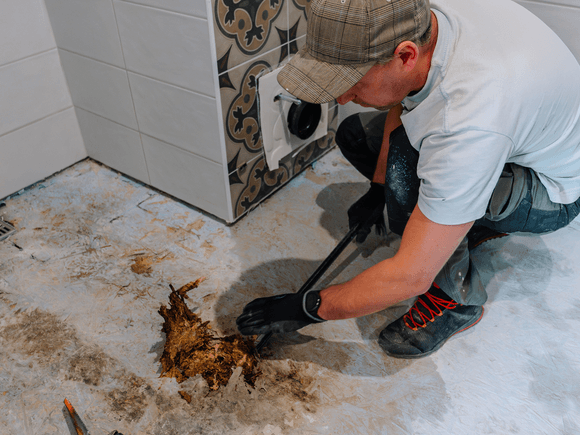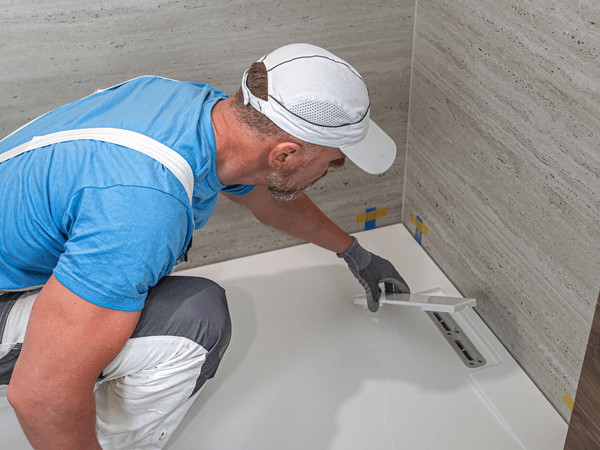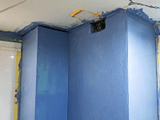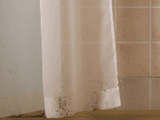Shower Leaks Behind Walls and What Insurance Actually Covers
Australian home insurance rarely covers shower leaks behind walls. Learn what's excluded, and why professional waterproofing protects your wallet.

Picture this, you notice a small water stain on your bathroom wall, then discover your shower has been slowly leaking behind the tiles for months. The damage is extensive, affecting the wall structure and spreading to your living room below. Your first thought? “My home insurance will cover this, right?”
For most Australian homeowners, the answer is a costly surprise.
Water damage ranks among the most common home insurance claims across Australia, yet coverage for shower leaks behind walls often leaves homeowners facing significant out-of-pocket expenses. Understanding these insurance gaps protects your financial future through smart prevention strategies.
What Australian insurance actually covers for behind wall shower leaks
The “sudden and accidental” rule
Most Australian home insurance policies cover “sudden and accidental” damage, such as burst pipes or unexpected flooding, but exclude “gradual damage” that occurs over time. For shower leaks behind walls, this distinction becomes crucial.
If a pipe suddenly bursts behind your shower wall, causing immediate flooding and damage, your insurance will likely provide coverage. However, damage from wear and tear, lack of maintenance, or gradual water damage that you could have reasonably been aware of typically isn’t covered.
The “couldn’t reasonably know” exception
Australian policies include one potential lifeline for behind wall leaks. Some insurers may cover gradual damage if you “couldn’t have reasonably known that the leak was there” such as inside a wall or under your house. This exception offers limited protection, but proving you couldn’t detect the leak often requires complex assessments and detailed investigations.
The catch? Most shower leaks show warning signs before major damage occurs, making this exception difficult to claim.
Coverage for consequential damage
When insurance does apply, it typically covers the water damage to other areas of your home flooring, walls, furniture, and belongings affected by the leak. With most combined home and contents policies, you’ll be covered for repairs to certain kinds of shower leaks as well as any water damage they cause to your insured contents.
However, this coverage comes with a critical limitation that surprises many homeowners. Even when water damage affects other areas of your home, the source of the problem often remains your financial responsibility.
What you’ll pay out-of-pocket (the expensive reality)
The major exclusions that hit hardest
Australian insurers target shower related water damage with specific exclusions. Major insurers like AAMI and Suncorp explicitly exclude “loss or damage caused by liquid escaping from a shower floor or base, or shower cubicle walls” from standard coverage.
This means even when your behind wall shower leak causes damage elsewhere in your home, if the source is the shower structure itself, you may find yourself without coverage.
Why most behind wall shower leaks don’t qualify
Gradual water damage, which includes leaking or faulty shower recesses and wet areas that haven’t been properly maintained, typically isn’t covered by insurance policies. The problem? Most behind-wall shower leaks develop slowly over time due to:
- Deteriorating grout and sealants
- Failed waterproofing membranes
- Poor initial installation
- Normal wear and tear
These scenarios fall squarely into the “gradual damage” category that insurers exclude.
The repair vs damage coverage gap
Even when insurance covers water damage to your home, policies typically won’t cover “the cost of repairing or replacing the item from which the liquid has escaped”. This means while your damaged flooring or walls might be covered, fixing the actual shower leak - the source of the problem, remains your responsibility.
Some insurers also set limits on how much they’ll contribute towards locating an unknown leak, such as $500 to $1,000, which often doesn’t cover comprehensive leak detection and repair.
The true cost when insurance doesn’t cover
Leaking showers can devastate your home and bank account. When insurance exclusions apply, Australian homeowners typically face:
- Immediate repair costs: $1,000 to $5,000 for basic bathroom renovation after water damage
- Structural damage: $10,000 to $25,000 when water weakens foundations, rots timber frames, or compromises load bearing elements
- Mould remediation: $2,000 to $8,000 for professional removal and health safe restoration
- Temporary accommodation: $150 to $300 per night while your bathroom becomes uninhabitable during repairs
The compliance connection and how Australian building standards affect your coverage
Australian building standards and your coverage
Australian law requires specific waterproofing standards for all bathroom renovations. These standards mandate waterproofing shower walls to at least 1.8 metres high and sealing entire shower floors properly.
These requirements aren’t just bureaucratic red tape they directly impact your insurance coverage. Insurers routinely deny claims for showers that don’t meet these standards, regardless of when the original installation occurred.
Insurance expects compliance
Insurance companies typically won’t cover leaking showers caused by faulty, poor, or non compliant workmanship or where waterproofing has failed due to non compliance with NCC or AS3740 standards. This means if your shower wasn’t installed to current Australian standards, insurance coverage becomes even more limited.
The maintenance clause trap
Insurance policies exclude damage from “neglected maintenance” of seals, grout, or waterproof membranes. What constitutes “reasonable maintenance” often becomes a point of dispute during claims, with insurers sometimes arguing that homeowners should have detected and addressed early signs of deterioration.
Professional installation requirements
Only licensed waterproofers can perform compliant work in Australia, and DIY waterproofing isn’t recommended as it may void warranties and insurance protection. Attempting to save money through DIY repairs can actually increase your financial exposure.
Why professional bathroom renovations are your best financial protection
Prevention vs reaction and the mathematics of protection
The financial equation is compelling: professional bathroom waterproofing costs $500 to $1,500 for average bathrooms, while water damage repairs typically cost $5,000 to $25,000. Most of these repair costs you’ll pay due to insurance exclusions.
Quality waterproofing creates a protective barrier that prevents water from seeping into walls and floors, eliminating the conditions that lead to costly insurance claim denials.
Quality waterproofing creates a protective barrier that prevents water from seeping into walls and floors, which is critical in areas like showers that experience high moisture levels. This upfront investment eliminates the conditions that lead to costly insurance claim denials.
Compliance assurance through professional work
Licensed waterproofing professionals ensure your renovation meets current Australian standards, providing the compliance foundation that insurance companies expect. Professional waterproofers in Australia must hold certification (typically Certificate III in Construction Waterproofing) and understand current building codes.
This professional compliance creates a documented trail that supports any future insurance claims and demonstrates responsible homeownership.
Long term value protection
Investing in proper waterproofing at the start of a renovation project can save considerable money and hassle compared to dealing with expensive fixes later. Professional renovations also:
- Maintain your property value by preventing structural damage
- Eliminate health risks from mould and mildew
- Provide warranty protection that insurance gaps can’t offer
- Create documentation for future insurance claims
The warranty advantage
Professional bathroom renovation companies provide warranties on their waterproofing work protection that bridges the gap where insurance coverage ends. When waterproofing is done correctly by licensed professionals, you gain peace of mind that goes beyond what insurance policies can provide.
Red flags that signal you need waterproofing renovation
Smart homeowners recognize warning signs before they become insurance exclusions:
Visible indicators:
- Water stains on walls or floors around the shower
- Mould or mildew growth in bathroom areas
- Cracked or missing grout and sealants
- Tiles that feel loose or sound hollow when tapped
- Persistent musty odours
Structural warning signs:
- Paint peeling or bubbling on bathroom walls
- Warped or discoloured flooring near the shower
- Cracks in bathroom walls or ceiling
- Doors or windows that stick in the bathroom area
The best way to avoid a leaky shower and any resulting water damage is prevention through regular maintenance completed by a professional. However, when these warning signs appear, the window for simple maintenance has often passed, and comprehensive renovation becomes necessary.
Protect your wallet before problems appear
Australian insurers send a clear message: they’ll help with sudden disasters, but prevention remains your responsibility. With faulty waterproofing causing as much damage as termites across Australia yet receiving far less insurance protection, proactive renovation becomes your primary financial defence.
Professional bathroom renovation goes beyond aesthetics. It represents smart financial protection when insurance policies exclude the scenarios that commonly affect Australian bathrooms.
The numbers don’t lie: invest $1,500 in professional waterproofing now, or risk paying $15,000 to $30,000 later when insurance coverage gaps leave you exposed.
Don’t wait for water stains or structural damage to appear. Professional assessment and renovation consultation identifies risks before they become expensive problems, providing financial protection that insurance alone cannot offer.
Frequently Asked Questions
Does home insurance cover gradual water damage from shower leaks behind walls?
What's the difference between sudden and gradual water damage for insurance claims?
How much does professional bathroom waterproofing cost compared to water damage repairs?
Are DIY waterproofing jobs covered by insurance if they fail?
What Australian building standards must shower waterproofing meet for insurance coverage?
This article provides general information only and should not be considered professional advice. Building regulations and standards are subject to change. Always consult licensed building practitioners and relevant authorities for advice specific to your project. Information is current as of publication date and accuracy cannot be guaranteed.



